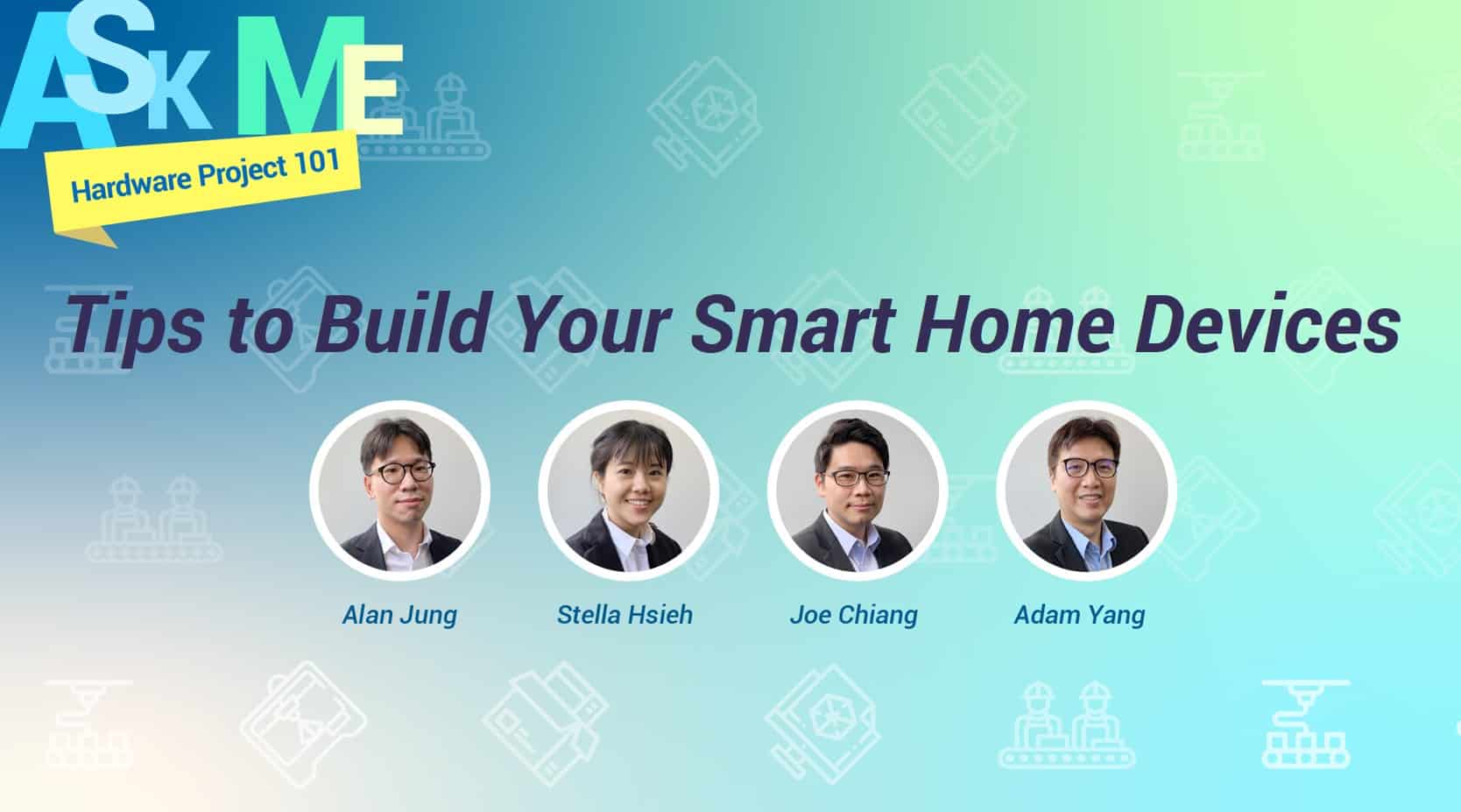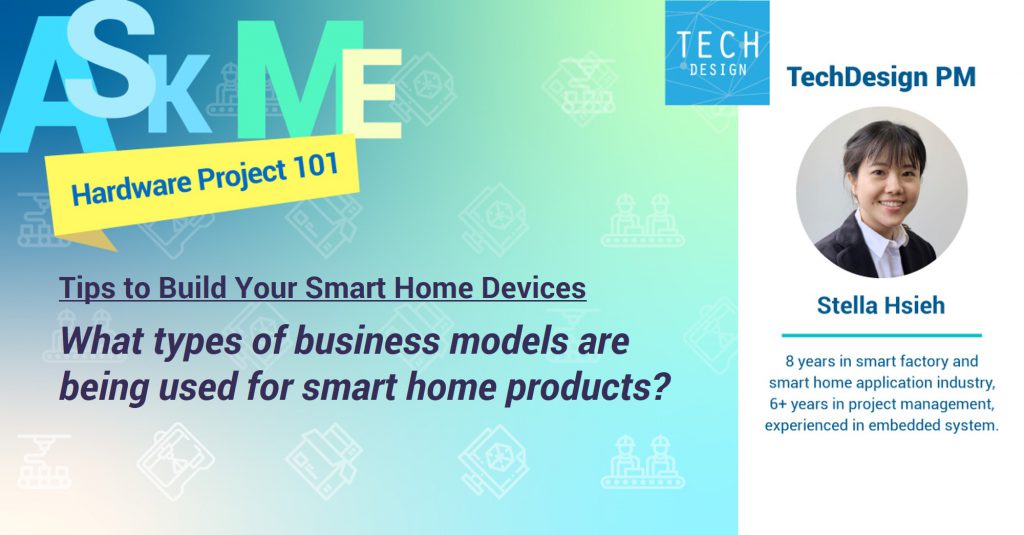Ask TechDesign PM: Tips to Build Your Smart Home Devices


Q: How can I differentiate my smart home product?
A: To make your product stand out, UI/UX is critical. Most smart home IoT solutions adopt either a web or app-based interface. In this red sea saturated with the likes of Xiaomi, UI/UX is one of the key differentiators that you will need to take into consideration in product development. Below are a few pointers:
- Hire an experienced UI/UX designer with good knowledge of the product development process for app or web-based applications who can communicate logically with your product manager and software team. If you are a startup, chances are the designer will need to be a multi-tasking player who can also facilitate workshops and user interviews for an in-depth understanding of your target audience.
- Make sure the installation process is not too frustrating. Yes, there are often many unavoidable steps in an IoT device setup: plugging in the gateway, installing the app, connecting the gateway with the app and cloud, enabling the sensors with the gateway, etc. It is your job to tidy up the flow with friendly guidance along the way so that your users won’t be scared away.
- Prioritize your app’s elements into simple layers suited for your killer application. For instance, you can have a data visualization page for all the sensory readings and graphs, an admin page for user account management, and a device page for managing action settings such as push notification, removal of a connected device, and OTA, etc. Similar functions should always be categorized and displayed in an intuitive way on the app to lessen the user learning curve.

Q: What are the must-have features for a smart home device?
A: Smart home devices come in all forms and functions, but any successful product will have these features:
- Can be controlled by APP: If there’s no APP, it can hardly be called smart. Customers expect to be able to control their devices via their smart phones and installation usually starts with downloading the APP.
- Connected by wireless: Wireless is everywhere today, and smart home is no exception. It allows users to flexibly position their devices wherever convenient in their home. This not only allows connectivity to your smart phone via Bluetooth, but also to link to your gateway via WiFi. Some technologies like Zigbee and Zwave are also suitable for group connectivity and mesh networking, allowing multiple devices to be controlled as a group.
- Let Data talk: Big data and AI is trending and for good reason. Customers are looking for more and more data and insightful algorithms that can make interesting suggestions to improve their home life or just provide interesting information about their home.
- Easy to setup: Many end customers of smart home products will not be tech savvy. Designers needs to think how to make product setup faster and easier for these users. If the setup procedure can be intuitive and through “one click” , product adoption will be much higher.
- Compatibility with other devices: For smart products, compatibility within an ecosystem will be important. Users will not want to have different platforms for each of their different devices. Being able to be controlled by Alexa, Google assistant, SiRi, etc ,will be a must. Other alliance likes IFTTT and TUYA provide a standard or protocol allowing different devices talk to each other and be controlled.

Q: What types of business models are being used for smart home products?
A: To develop a smart home device is not difficult – it can be done by simply adding some sensors and wireless modules to existing household appliances. What could make the difference in your device catching on is your business model, here are a few options:
- Traditional sales model – the most straightforward approach is to just sell your product as you would any other consumer good. While the upfront cash is nice, you must take into account the ongoing cloud and after-sales service costs to support the product. This model is common for small, cheap gadgets like smart lamps and smart plugs.
- Subscription model – this is akin to “smart home as a service” where the consumer pays a monthly fee for the use of the smart home device. Consumers benefit from fast setup/activation and free maintenance/replacement. Manufacturers get a steady revenue stream with inherent customer stickiness (can even be bundled with estate sales). This model is common for more expensive items that are not likely to be moved after mounting, e.g., security cameras, thermostats and door locks.
- Partnership model – Rather than competing through traditional sales channels, you can also partner with internet service providers who will bundle these devices with their offerings. This can quickly expand your brand awareness and user base.

Q: What is being done to increase connectivity across smart home devices?
A: In recent years, with the vigorous development of Internet of Things products, smart products have become more and more widely used in homes, and product categories have proliferated greatly. However, because manufacturers use different transmission technologies to design their products, it is difficult to ensure that all the different products can connect to one other.
Up until recently, four major alliances/frameworks had been established: 1) Apple – HomeKit, 2) Google – Nest, 3) Microsoft – AllSeen Alliance, and 4) Intel – OIC Alliance. Developers and manufacturers could align themselves with one of the above and develop products compatible with others using the same alliance. For example, Apple – Homekit’s products provide connectivity across electric lights, doorbells, door locks, home appliances, thermometers, health management, etc. Once these products have been certified by Apple, they can be connected through the Homekit app.
Recently, in order to further unify the transmission technology, Amazon, Apple, Google, and the ZigBee Alliance (with companies such as IKEA, NXP, Samsung, Signify (formerly Philips lighting) and others) have formed the (CHIP) Connected Home Over IP project to develop a new standard for smart home connectivity based on Internet Protocol (IP) standards. The development of such a standard, along with the deployment of 5G, will only serve to further drive the acceleration of IoT products.










